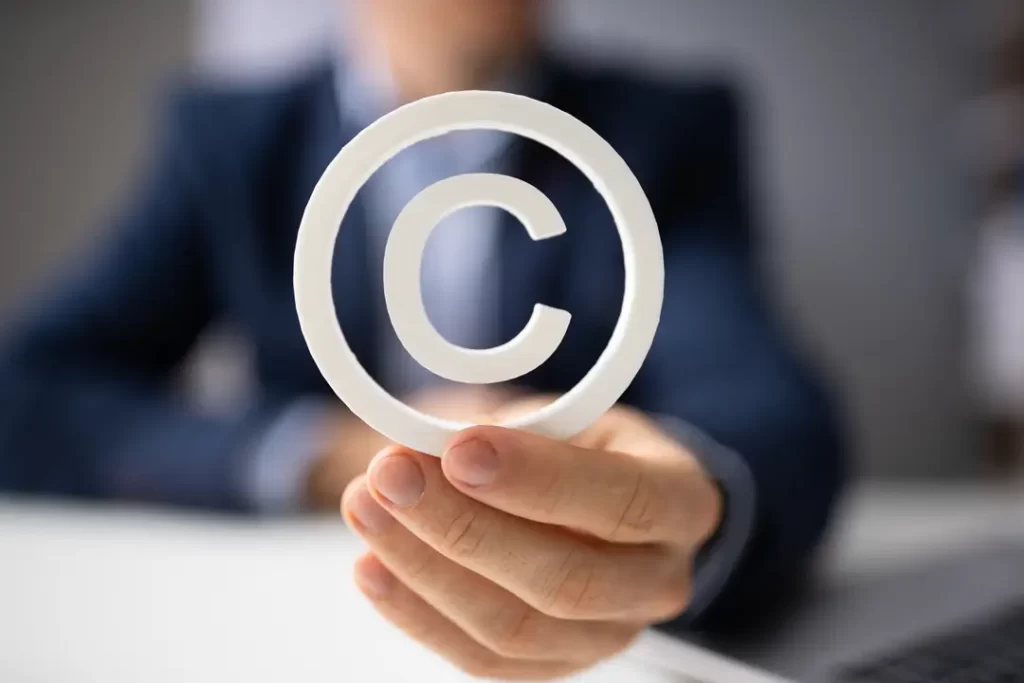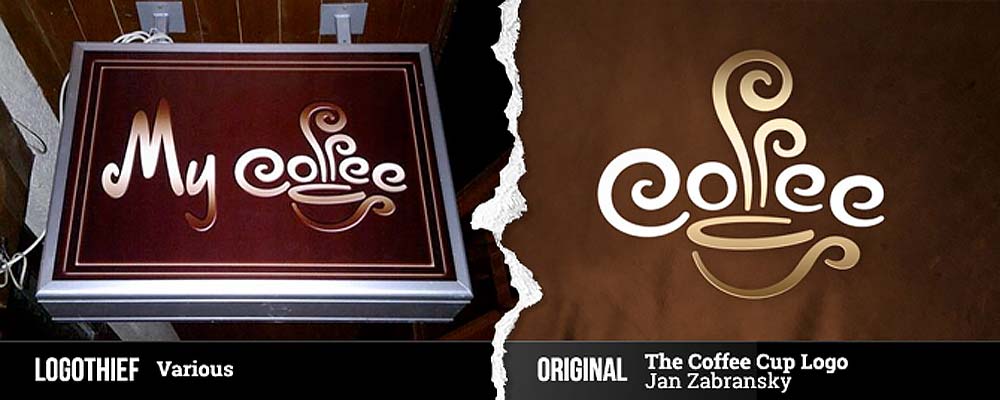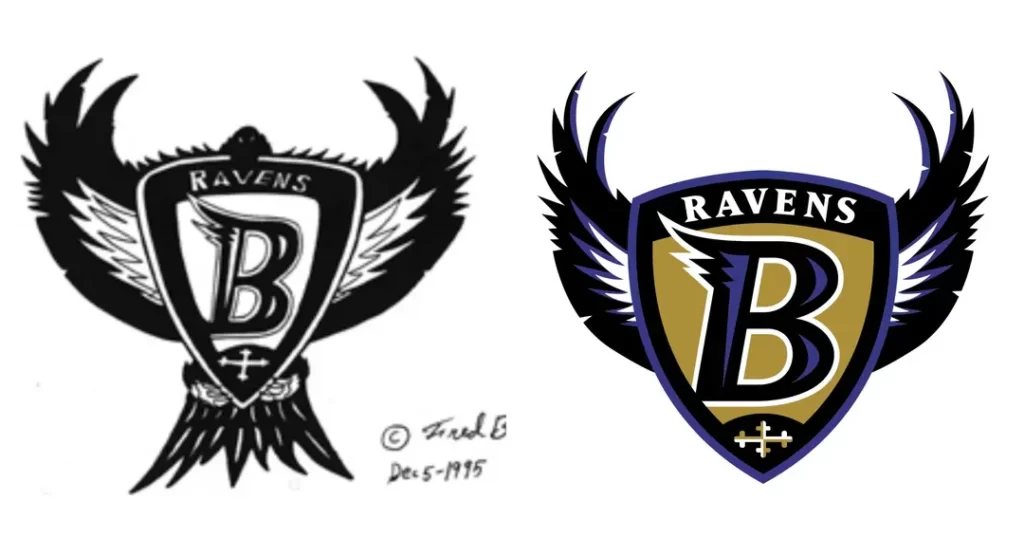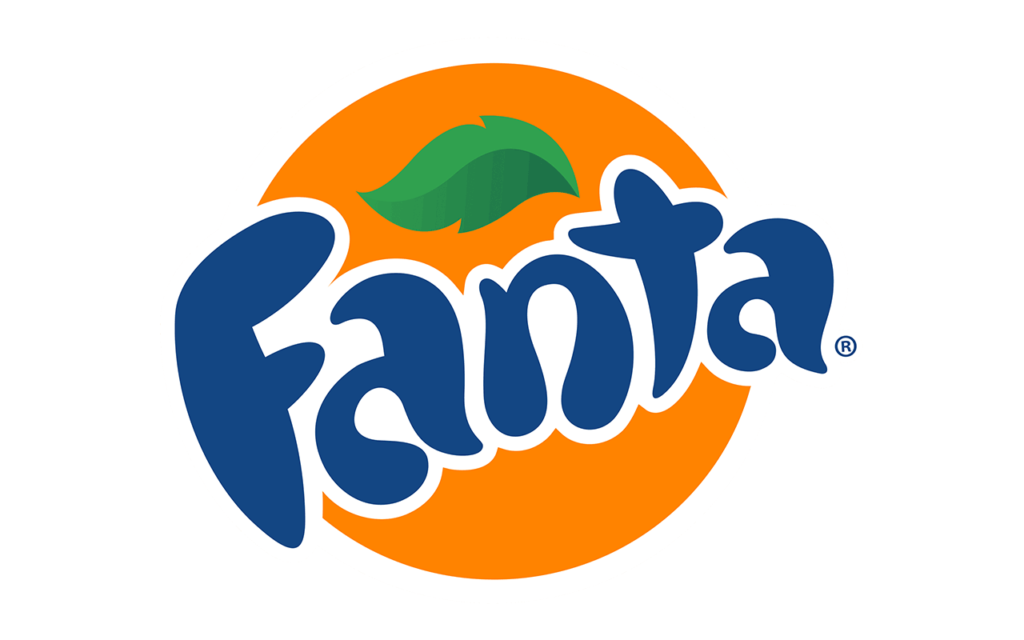How to Copyright a Logo to Protect Your Brand
A custom logo design is essential to establishing your brand identity in the cut-throat global market. Like your company's name, your logo is a unique symbol that embodies your business persona and sets you apart from the competition. The artistry of your logo design should be a true reflection of your brand's values, aspirations, and character, resonating with your target audience.
But be aware that your logo design is more than just a visual representation of your brand. It is your goodwill, a testament to your brand's reputation, and an asset that requires safeguarding. The last thing you want is to have your logo design ripped off or used by other brands without permission. Therefore, you must register the copyright of your logo design.
Now, let's delve into how to copyright your logo design. But before that, let's gain a comprehensive understanding of the basics. From the choice of colours, fonts, symbols, and the overall layout, every detail in your logo design should exude your brand's essence and communicate a coherent message to your audience. It's crucial to strike the right balance between creativity and coherence to create a logo design that's both visually appealing and aligned with your brand's values.
Once you've nailed down the aesthetics, it's time to begin registering the copyright of your logo design. The process entails applying to the copyright office, along with the necessary documentation and a nominal fee. With copyright registration in place, you can enjoy exclusive rights to your logo design, and anyone who uses it without your permission can face legal consequences.
Table of Contents
What is Copyright?

The concept of copyright is a legal safeguard that establishes your ownership over a specific creation, be it a task, work, or design. It is a protective shield, shielding your creative output from being exploited or misused by someone else without your consent. Copyrighting is an integral aspect of maintaining control over the commercial utilisation of your work, enabling you to focus on the uniqueness and relevance of your tailored content, painting, web design, or logo design.
The fundamental requirement for owning the copyright in your work is to have it developed in a fixed form of expression. Whether a literary masterpiece or a stunning artwork, owning the copyright empowers you to regulate its usage, distribution, and reproduction. However, copyrighting a logo design holds even greater significance for businesses that aspire to maintain a unique identity in the cut-throat global market.
As a professional designer, there's nothing more agonising than witnessing your design being used by someone else without your authorisation. Your creative work is your intellectual property; nobody else can use it commercially without your consent. Designers must know all the copyright laws that can help define their logo design ownership to safeguard the fruits of their creativity.
Here's a list of some of the primary copyright legislation that every designer should be aware of to protect their creative elements:
- Copyright Act of 1976
- Digital Millennium Copyright Act (DMCA)
- Visual Artists Rights Act (VARA)
- Trademark law
- Fair Use Doctrine
Understanding these copyright laws is crucial to protecting your creative endeavours and controlling your intellectual property. Copyrighting your work, especially your logo design, is essential in establishing your ownership and protecting it from unauthorised usage. By owning the copyright, you can enjoy exclusive rights to your creation and safeguard its integrity from being infringed upon by others.
- Wilson, Lee (Author)
- English (Publication Language)
- 312 Pages – 04/02/2019 (Publication Date) – Allworth (Publisher)
1 – Things you CAN'T Copyright
As a designer, it's essential to understand the nuances of intellectual property law. One common point of confusion is the difference between copyright and trademark. While both offer protection for creative works, they serve distinct purposes.
Regarding copyright, the primary goal is to prevent unauthorised copying of original works. This includes written materials, images, music, and more. However, certain things, such as ideas, concepts, systems, or methods of doing something, cannot be copyrighted.
Other elements like slogans, symbols, and variations of lettering and colouring may also fall outside the scope of copyright protection.
So, what can you do to protect these elements? That's where trademarks come into play. While copyright focuses on the actual content of a work, trademarks are designed to cover specific words, phrases, symbols, and other identifying marks associated with a particular brand or product. By registering a trademark, you can prevent others from using similar marks in a way that could create confusion in the marketplace.
It's worth noting that trademark protection has some limitations as well. For example, you can't simply trademark a widely used common word or phrase. Similarly, you can't use a trademark to prevent someone from using a descriptive term to refer to a product or service. Ensure your brand is unique and distinctive enough to warrant legal protection.
Ultimately, whether to pursue copyright or trademark protection will depend on the specific circumstances of your work. In many cases, a combination of both may be appropriate. Understanding the differences between these two forms of protection ensures that your creative works are safeguarded and that your brand can stand out in a crowded marketplace.
2 – Claim for the Copyright

As a designer, you know that creating something new and innovative is an exciting and rewarding process. However, intellectual property law can get more complicated. For example, if you're working on a project for a client, there may be questions about who owns the rights to the final product.
In most cases, the client will want to ensure that they have exclusive ownership of the work you've created for them. You can accomplish this through various legal mechanisms, including copyright and trademark law. While you may be hesitant to give up ownership of your creative work, it's essential to understand that these agreements are often necessary to protect your and your client's interests.
One common approach is to enter into a work-for-hire agreement, meaning the client is the legal owner of the work you create on their behalf. This type of agreement can benefit both parties, as it ensures that the client has complete control over the work and can use it as they see fit. However, as the designer, it's vital to ensure that you also retain some rights to the work.
One way to do this is to negotiate an agreement to use the work as part of your portfolio or for self-promotion. This can be particularly important for designers building their reputations and wanting to showcase their skills to potential clients. By retaining some limited rights to the work, you can ensure that you're able to use it to further your own career goals.
Of course, navigating these legal waters can be complex, especially if you're unfamiliar with intellectual property law. That's why it's always a good idea to work with the best-paid lawyers who can help you understand your rights and obligations as a designer. With the proper legal guidance, you can protect your creative work and ensure that you can build a successful career in this exciting field.
- Charmasson, Henri J a (Author)
- English (Publication Language)
- 384 Pages – 08/01/2008 (Publication Date) – For Dummies (Publisher)
3 – Registration of Copyright
First and foremost, it's essential to understand that you don't necessarily have to register your logo design to protect it. As the creator of the design, you automatically own the copyright to it as soon as you create it. If someone else tries to use your design without your permission, you have legal grounds to take action against them.
That being said, there are some advantages to registering your logo design with the Copyright Office. For example, suppose someone does infringe on your copyright. In that case, you may be eligible to sue them for statutory damages, which can be significantly higher than the damages you may have suffered.
You can add the copyright symbol (©) to the image to clarify that your logo design is copyrighted. This symbol lets others know that you own the copyright to the design and that they cannot use it without your permission. However, it's important to note that adding the symbol is not necessary for copyright protection.
Instead, you can include a notice with the image indicating that it is copyrighted. This notice might say something like “Copyright [year] [your name or business name]. All rights reserved.” By including this notice, you can ensure that others know your copyright ownership and are less likely to infringe on your rights.
4 – Understanding the concept of infringement

While there is no universal standard for infringement, it's important to remember that copyright protection safeguards your originality and keeps your work safe from unauthorised use. By taking the necessary steps to protect your work, you can ensure your creative vision is respected and valued in the marketplace.
Registering your copyright with the Copyright Office is one way to protect your work from infringement. This process involves submitting your design to the office and paying a fee, but it can provide additional legal protection if someone infringes on your rights.
In addition to registering your copyright, there are other steps you can take to protect your work. For example, you can add watermarks to your images or use digital rights management (DRM) tools to prevent unauthorised use or distribution of your work online.
It's also important to be vigilant and proactive in monitoring for infringement. This might involve using search engines or online monitoring tools to search for instances of your work being used without your permission. If you encounter an infringement example, you can take legal action to enforce your rights and protect your work.
5 – Compensation
If you can provide evidence of infringement, you can ask for damages to compensate for any losses you have incurred due to the violation. This might include lost revenue, reputational harm, or other damages related to the unauthorised use of your work.
Another legal remedy available to you is filing for an injunction. This court order prohibits the infringing party from using your work without your permission. By obtaining an injunction, you can protect your work from further unauthorised use and may also be able to claim compensation for any damages incurred as a result of the infringement.
Sometimes, you may even request that the court take severe actions against the infringing party. This might include fines, penalties, or other legal sanctions to deter future infringement.
Of course, the best way to protect your work is to register a copyright for your logo design. Doing so lets you establish ownership of the design and prevent others from using it without your permission. This can provide you with legal protection and peace of mind, knowing that your work is secure.
What is the Difference Between Copyright and Trademark?

So, you want to keep your logo safe from those sneaky copycats? Then, you better strap in and get ready to learn about copyrighting and trademarking.
Listen up; copyrighting alone won't cut it. Sure, it'll secure your rights and proclaim to the world that it's your intellectual property, but it won't protect your logo from being stolen.
That's where trademarking comes in, my friend. If someone tries to swipe your logo, a trademark can come to the rescue and legally stop them.
Now, let's dive deeper into these two concepts, shall we?
Copyright Protection
It safeguards your authorship of various works, such as writing, music, drama, and other intellectual creations. Interestingly, your work automatically receives copyright protection when you make it public. However, if you want to take legal action against someone infringing on your work, you must register it. That means you must fill out a form, pay a fee, and send a copy of the work to the United States Copyright Office. It may sound like work, but protecting your intellectual property is worth protecting!
- Harris, Radiance W. (Author)
- English (Publication Language)
- 110 Pages – 11/15/2020 (Publication Date) – Radiance Walters Harris (Publisher)
Trademark Protection
While Copyright ensures protection over your authorship or ownership of an intellectual work, Trademark shields words, symbols, colours, names, or sounds that depict your products and services from the grip of your potential competitors. So, if you yearn to give your brand a boost, then you must obtain a registered Trademark for your business name, logos, slogans, etc. Trademark confers authenticity to your brand, ensuring no one else can exploit your unique identity.
Copyright and Trademark bestow a shield to your intellectual property, but they differ in the types of assets they protect. Copyright primarily focuses on safeguarding creative and artistic works like books, music, paintings, and so forth, while Trademark is more about securing your business name and logo – things that portray your brand image. Thus, employing Copyright and Trademark protection safeguards your business's logo design.
When Should You Copyright a Logo Design?

If you have created a logo, it is a piece of art and automatically falls under copyright protection. But how do you go about claiming your copyright? Here are some high-level steps:
- Know when to claim for copyright. You can claim copyright only if you are the original creator of the logo. If you commissioned the work to a designer, you could acquire the copyright only if they agreed to transfer the rights to you.
- Conduct thorough research on existing logos. It is vital to research to ensure that your logo is unique and not similar to any existing logo. If it is, then you cannot claim copyright for it. To conduct research, you can visit the U.S. Copyright Office website, which provides a database of all the registered trademarks.
- Apply for copyright registration. Once you are sure your logo is unique and not similar to any existing logos, you can apply for copyright registration. This involves filling out a form, paying a fee, and sending a logo copy to the United States Copyright Office.
- Wait for confirmation. After submitting your application, it may take some time to receive confirmation that your copyright has been registered. Once you receive confirmation, your logo is protected under copyright laws, and you have legal recourse in case of infringement.
How to Copyright a Logo Design?
Are you looking to copyright your logo? It's a smart move to secure your rights and prevent others from using it without your permission. But where do you start? Here are the steps to copyright a logo design and protect your brand.
- Fill and Submit the Application: The first step is to download the copyright form online and fill it out accurately with the required information. You can submit both the electronic and paper versions of the form online via the official website of the United States Copyright Office. If you file online, create an account, follow the instructions, and submit your application. If you prefer to fill out a paper form, download Form VA, print it and add the correct information. The form will ask you to provide personal details, including the owner's or author's name and the nature of copyright documentation. You'll also need to mention your payment method and contact information and sign the form by hand.
- Pay the Registration Fee: To copyright your logo, you must pay a registration fee of $45 if filing electronically or $65 via mail. Remember that the payment is non-refundable, and if you renew your copyright claim, you'll need to file a paper application (Form RE). If applying online, pay the fee via credit card or mail, and use a check or money order.
- Submit the Copies of Your Logo: If your logo has been published on another platform, you must send two copies. You may only need to send one document if it has never been publicly posted. Remember that they will not return these copies to you. If you're filing online, attach a digital version of your logo, but you'll still need to submit the hard copy later.
- Get a Confirmation Mail: Once you've uploaded your logo file and paid the registration fee, you'll receive a confirmation about your registered copyright. The confirmation will show a pending status for approval. Remember that the date you submitted your application will be considered the date of copyright, not the time of approval.
Remember that copyrighting your logo is essential to safeguard your intellectual property rights. Following these steps, you can easily copyright your logo and prevent others from using it without your permission.
Conclusion
In conclusion, copyrighting a logo may seem daunting and complicated, but protecting your brand's identity and preventing unauthorised use of your creative work is crucial. Following the steps outlined in this article, you can ensure that your logo design is registered under copyright laws and that any infringement can be dealt with legally. Remember to conduct proper research, complete the application accurately, and pay the registration fee on time. Don't let anyone steal your brand's logo and diminish its value. Copyright it today and secure your brand's identity.
Last update on 2024-05-15 / Affiliate links / Images from Amazon Product Advertising API



